Ran (?, Japanese for "chaos" or "turmoil") is a 1985 period film directed, edited and co-written by Akira Kurosawa. The plot of the film derives from Shakespeare's King Lear and includes segments based on legends of the daimy? M?ri Motonari. The film stars Tatsuya Nakadai as Hidetora Ichimonji, an aging Sengoku-period warlord who decides to abdicate as ruler in favor of his three sons.
| Ran | |
|---|---|
Theatrical release poster | |
| Directed by | Akira Kurosawa |
| Produced by |
|
| Screenplay by |
|
| Starring |
|
| Music by | Toru Takemitsu |
| Cinematography |
|
| Edited by | Akira Kurosawa |
Production companies |
|
| Distributed by |
|
Release date |
|
Running time | 162 minutes |
| Country |
|
| Language | Japanese |
| Budget | $11 million |
| Box office | $12 million (Japan) |
The film is a Japanese-French venture produced by Herald Ace, Nippon Herald Films and Greenwich Film Productions. The production planning of Ran went through a long period of preparation. Kurosawa conceived the idea of Ran in the mid-1970s, when he read about Motonari, who was famous for having three highly loyal sons. Kurosawa devised a plot in which the sons become antagonists of their father. Although the film became heavily inspired by Shakespeare's play King Lear, Kurosawa began using it only after he had started pre-planning for Ran. Following this pre-planning, Kurosawa filmed Dersu Uzala in 1975 followed by Kagemusha in the early 1980s before securing financial backing to film Ran.
Ran was Kurosawa's second encounter with Shakespeare during his filmmaking career. In 1957, Kurosawa had directed Throne of Blood (???? Kumonosu-j?, "Spider Web Castle") based on Shakespeare's Macbeth. The film transposes the plot of William Shakespeare's play Macbeth from Medieval Scotland to feudal Japan, with stylistic elements drawn from Noh drama. Throne of Blood tells the story of a warrior, like Macbeth, who assassinates his sovereign at the urging of his ambitious wife. Despite the changes in setting and language, both Ran and Throne of Blood are considered to be among the best film adaptations of King Lear and Macbeth, respectively.
As Kurosawa's last epic, Ran has often been cited as among his finest achievements and is widely regarded as one of the greatest films ever made. With a budget of $11 million, it was the most expensive Japanese film produced up to that time. Ran was previewed on May 31, 1985, at the Tokyo International Film Festival before its release on June 1, 1985, in Japan. The film was hailed for its powerful images and use of color—costume designer Emi Wada won an Academy Award for Best Costume Design for her work on Ran. The distinctive Gustav Mahler–inspired film score was composed by Toru Takemitsu.
Screenplay
Hidetora Ichimonji, a powerful though now elderly warlord, decides to divide his kingdom among his three sons: Taro, Jiro, and Saburo. Taro, the eldest, will receive the prestigious First Castle and become leader of the Ichimonji clan, while Jiro and Saburo will be given the Second and Third Castles. Hidetora is to retain the title of Great Lord and Jiro and Saburo are to support Taro.
Hidetora lectures his sons about the importance of unity using three arrows (one arrow is easy to snap in half but three arrows bundled together are much more durable). Saburo, however, breaks all three arrows with his knee and calls the lecture foolish. He points out that Hidetora is foolish if he expects his sons to be loyal to him, reminding him that even Hidetora had previously used the most ruthless methods to attain power. Hidetora infers the comments to be subversive, and when his servant Tango comes to Saburo's defense, he exiles both men. Fujimaki, a visiting warlord who had witnessed these events agrees with Saburo's frankness, and invites him to take his daughter's hand in marriage.
Following the division of Hidetora's lands between his remaining two sons, Taro's wife Lady Kaede begins to urge her husband to usurp control of the entire Ichimonji clan. She is still bitter about the loss of her family; Hidetora's forces killed her family after a land dispute and took over the family's land as his own. When Taro demands Hidetora renounce his title of Great Lord, Hidetora then storms out of the castle and travels to Jiro's castle, only to discover that Jiro is only interested in using Hidetora as a titular pawn. Hidetora and his retinue then leave Jiro's castle as well without any clear destination. Eventually Tango appears with provisions but to no avail. Tango then tells Hidetora of Taro's new decree: death to whoever aids his father. At last Hidetora takes refuge in the Third Castle, abandoned after Saburo's forces followed their lord into exile. Tango does not follow him. Kyoami, the court fool, then jokes about Hidetora's predicament, only to be thrown out of the Third Castle.
Shortly thereafter, Hidetora and his samurai retinue are besieged militarily by Taro and Jiro's combined forces. In a short but violent siege, virtually all defenders are slaughtered as the Third Castle is set alight. Solitarily, Hidetora succumbs to madness and wanders away from the burning castle. As Taro and Jiro's forces storm the castle, Taro is killed by a bullet fired by Jiro's general, Kurogane. Hidetora is discovered wandering in the wilderness by Kyoami, and Tango, who is still loyal to him and who stays to assist Hidetora. In his madness, Hidetora is haunted by horrific visions of the people he destroyed in his quest for power. They take refuge in a peasant's home only to discover that the occupant is Tsurumaru, the brother of Lady Sué, Jiro's wife. Tsurumaru had been blinded and left impoverished after Hidetora took over his land and killed his father, a rival lord.
With Taro dead, Jiro becomes the Great Lord of the Ichimonji clan, enabling him to move into the First Castle. Upon Jiro's return from battle, Lady Kaede, seemingly unfazed by Taro's death, blackmails Jiro into having an affair with her, and she becomes the power behind his throne. Kaede demands that Jiro kill Lady Sué and marry her instead. Jiro orders Kurogane to do the deed, but he refuses, warning Jiro that Kaede means to ruin the entire Ichimonji clan. Kurogane then warns Sué and Tsurumaru to flee. Tango, still watching over Hidetora with Kyoami, encounters two ronin who had once served as spies for Jiro. Before he kills them both, one of the ronin tells him that Jiro is considering sending assassins after Hidetora. Alarmed, Tango rides off to alert Saburo. Hidetora becomes even more insane and runs off into a volcanic plain with a frantic Kyoami in pursuit.
Saburo's army crosses back into Jiro's territory to find him. News also reaches Jiro that two rival lords allied to Saburo (Ayabe and Fujimaki) have also entered the territory, forcing Jiro to hastily mobilize his army. At the field of battle, the two brothers accept a truce, but Saburo becomes alarmed when Kyoami arrives to tell of his father's descent into insanity. Saburo goes with Kyoami to rescue his father and takes 10 warriors with him; Jiro sends several gunners to follow Saburo and ambush them both. Jiro then further orders an attack on Saburo's much smaller force. Saburo's army retreats into the woods for cover and fires on Jiro's forces, frustrating the attack. In the middle of the battle a messenger arrives with news that a rival warlord, Ayabe, is marching on the First Castle, forcing Jiro's army to hastily retreat.
Saburo finds Hidetora in the volcanic plain; Hidetora partially recovers his sanity, and begins repairing his relationship with Saburo. However, one of the snipers Jiro had sent after Saburo's small group shoots and kills Saburo. Overcome with grief, Hidetora dies. Fujimaki and his army arrive from their victory only to witness Tango and Kyoami lamenting the death of father and son.
Meanwhile, Tsurumaru and Sué arrive at the ruins of a destroyed castle but inadvertently leave behind the flute that Sué previously gave Tsurumaru when he was banished. She gives a picture of Amida Buddha to him for company while she attempts to retrieve the missing flute. It is when she returns to Tsurumaru's hovel to retrieve it that she is ambushed and killed by Jiro's assassin.
At the same time, Ayabe's army pursues Jiro's army to the First Castle and commences a siege. When Kurogane hears that Lady Sué has been murdered by one of Jiro's men, Kurogane confronts Kaede. She admits her perfidy and to her plotting to exact revenge against Hidetora and the Ichimonji clan for having destroyed her family years before. Enraged, Kurogane kills Kaede. Jiro, Kurogane, and all Jiro's men subsequently die in the battle with Ayabe's army that follows.
A solemn funeral procession is held for Saburo and Hidetora. Meanwhile, left alone in the castle ruins, Tsurumaru trips, dropping the Amida Buddha image Sué had given to him. The film ends with a distance shot of Tsurumaru, blind and alone, silhouetted, atop the ruins.
- Tatsuya Nakadai as Ichimonji Hidetora (??? ??), the film's equivalent to King Lear
- Akira Terao as Ichimonji "Taro" Takatora (??? ?? ??), Hidetora's eldest son and heir, the film’s equivalent to Goneril
- Jinpachi Nezu as Ichimonji "Jiro" Masatora (??? ?? ??), Hidetora's second son, the film’s equivalent to Regan
- Daisuke Ryu as Ichimonji "Saburo" Naotora (??? ?? ??), Hidetora's youngest son, the film’s equivalent to Cordelia
- Mieko Harada as Lady Kaede (??? Kaede no Kata), Taro's wife and the film's equivalent to Edmund
- Yoshiko Miyazaki as Lady Sué (??? Sue no Kata), Jiro's wife whose clan was destroyed by Hidetora and the rough equivalent to Albany, husband to Goneril
- Mansai Nomura as Tsurumaru (??), Sué's brother who was blinded by Hidetora and is the film's Gloucester equivalent
- Hisashi Igawa as Kurogane (?), Jiro's chief advisor and military commander
- Peter as Kyoami (??? Ky?ami), the fool
- Masayuki Yui as Hirayama Tango (?? ??), Hidetora's main advisor, roughly analogous to Kent
- Kazuo Kato as Ikoma Kageyu (?? ???), an Ichimonji clan official
- Jun Tazaki as Ayabe Seiji (?? ??), a rival daimy?
- Hitoshi Ueki as Fujimaki Nobuhiro (?? ??), another rival daimy?, based somewhat on the King of France from the play.
Ran was Kurosawa's last epic film and by far his most expensive. At the time, its budget of $11 million made it the most expensive Japanese film in history leading to its distribution in 1985 exceeding the budget of 7.5 million dollars for his previous film Kagemusha. It is a Japanese-French venture produced by Herald Ace, Nippon Herald Films and Greenwich Film Productions. Filming started in 1983. The 1,400 uniforms and suits of armor used for the extras were designed by costume designer Emi Wada and Kurosawa, and were handmade by master tailors over more than two years. The film also used 200 horses. Kurosawa loved filming in lush and expansive locations, and most of Ran was shot amidst the mountains and plains of Mount Aso, Japan's largest active volcano. Kurosawa was granted permission to shoot at two of the country's most famous landmarks, the ancient castles at Kumamoto and Himeji. For the castle of Lady Sué's family, he used the ruins of the custom-constructed Azusa castle, made by Kurosawa's production crew near Mount Fuji. Hidetora's third castle, which was burned to the ground, was a real building which Kurosawa built on the slopes of Mount Fuji. No miniatures were used for that segment, and Tatsuya Nakadai had to do the scene where Hidetora flees the castle in one take.
Watch movie Ran Film online on Amazon
Watch movie Ran Film online
Watch The Movie On PrimeDil Hai Ke Manta Nahin Full HD Movie Download
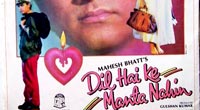
Mera Pehla Pehla Pyaar Full HD Movie Download

Intaqaam Full HD Movie Download
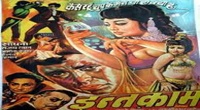
Kal Kissne Dekha Full HD Movie Download

Annamalai Full HD Movie Download
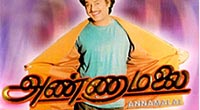
Habari Full HD Movie Download

Haar Jeet Full HD Movie Download
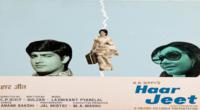
Film Hi Film Full HD Movie Download
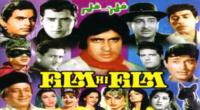
Dariya Dil Full HD Movie Download
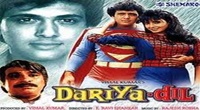
Balwaan Full HD Movie Download

New Delhi Full HD Movie Download
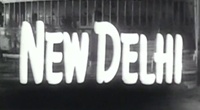
Abohomaan Full HD Movie Download
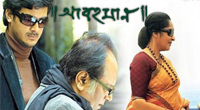
Vijetha (Telugu) Full HD Movie Download
.jpg)
Veerta The Power Full HD Movie Download
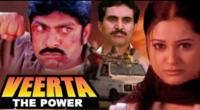
RocknRolla Full HD Movie Download

Angakkuri Full HD Movie Download

Dark Water Full HD Movie Download

Kaliyamardhanam Full HD Movie Download

Anbukku Naan Adimai Full HD Movie Download

Rajakumari Full HD Movie Download
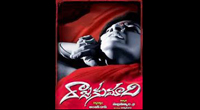
Gudhachari No.1 Full HD Movie Download
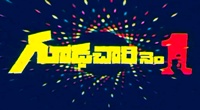
Download latest Movie from bollywood
- 1> baaghi 3
- 2> THE SKY IS PINK MOVIE FULL STORY AND REVIEW
- 3> Luka Chuppi
- 4> TO ALL THE BOYS I’VE LOVED BEFORE
- 5> Kabir Singh
- 6> Street Dancer 3D
- 7> Simmba
- 8> Gone Girl
- 9> The Girl Who Lived
- 10> Ludo
- 11> DILWALE DULHANIA LE JAYENGE
- 12> GUILTY
- 13> The Godfather
- 14> Adventures of Rusty
- 15> Sooryavanshi
- 16> Satyameva Jayate 2
- 17> Thappad
- 18> Bhool Bhulaiyaa 2
- 19> KGFChapter 2
- 20> Mardaani 2
- 21> Pinjar
- 22> Shivaji maharaj
- 23> Ek Villian 2
- 24> Hungama 2
- 25> Divergent
- 26> Mumbai Saga
- 27> The Internship
- 28> HIT (telugu)
- 29> Panga
- 30> The perfect date
- 31> 16 December
- 32> Gopala Gopala (Telugu)
- 33> Brahmastra
- 34> Gangubai Kathiawadi
- 35> Manmadhudu
- 36> Nenu local
- 37> Mahanati
- 38> Shatamanam bavathi
- 39> Lagaan
- 40> After
- 41> MOM
- 42> Shamshera
- 43> Raguvaran BTech
- 44> Khakee
- 45> The villain
- 46> OM
- 47> Mr. perfect
- 48> Bueatifull mind
- 49> Hichki
- 50> Gabbar Singh
- 51> Jogi
- 52> Before Sunrise
- 53> Before Sunset
- 54> Before Midnight
- 55> The Big Bull
- 56> Top Gun: Maverick
- 57> The Purge
- 58> The Sky is Pink
- 59> Laxmmi Bomb
- 60> Sadak 2
- 61> Sufna
- 62> Prithviraj
- 63> PK
- 64> Coolie No 1(2020)
- 65> Black Widow
- 66> Dear Zindagi
- 67> Dil Bechara
- 68> PHIR HERA PHERI
- 69> WAR
- 70> Dostana
- 71> RRR: Roudram Ranam Rudhiram
- 72> Maidan
- 73> Dabbang 3
- 74> Chhalaang
- 75> life as we know it
- 76> SherShaah
- 77> Sandeep Aur Pinky Faraar
- 78> Event Horizon
- 79> 83
- 80> Radhe: Your Most Wanted Bhai
- 81> Gunjan Saxena: The Kargil Girl
- 82> Mr India
- 83> Vivah
- 84> Anokha Bandhan
- 85> Ghost
- 86> Bhoot: Part One - The Haunted Ship
- 87> Haseen Dilruba
- 88> Laal Singh Chaddha
- 89> Qismat
- 90> Rajput
- 91> Drive
- 92> Dil Chahta Hai
- 93> Dil Ki Baazi
- 94> Dil Ka Rishta
- 95> Teesri Manzil
- 96> Dil
- 97> Love Aaj Kal
- 98> Khaali Peeli
- 99> Bunty Aur Babli 2
- 100> Atrangi Re
- 101> Gulabo Sitabo
- 102> Jodi
- 103> Suraj Pe Mangal Bhari
- 104> Deewana
- 105> Attack
- 106> Sardar Udham Singh
- 107> Toofan
- 108> THE LOVEBIRDS
- 109> Jersey
- 110> Ginny Weds Sunny
- 111> Thalaivi
- 112> Shiddat
- 113> Angels vs Zombies
- 114> Koi Mil Gya
- 115> Thank God
- 116> Bhuj: The Pride of India
- 117> Hum Aapke Hain Kaun
- 118> The Platform
- 119> Bird Box
- 120> Roohi Afzana
- 121> Torbaaz
- 122> Nikamma
- 123> World War Z
- 124> Extraction
- 125> Train to Busan
- 126> Life of Pi
- 127> SHAADI MEIN JROOR AANA
- 128> Himmat Aur Mehnat
- 129> To All The Boys: P.S. I Still Love You
- 130> Mimi
- 131> Good Newwz
- 132> Shubh Mangal Zyada Saavdhan
- 133> Raabta
- 134> Harry Potter and the Philosopher's Stone
- 135> Harry Potter and the Chamber of Secrets
- 136> Chhapaak
- 137> War of the Worlds
- 138> Harry Potter and the Prisoner of Azkaban
- 139> Harry Potter and the Goblet of Fire
- 140> MURDER MYSTERY
- 141> Shakuntala Devi
- 142> Bachchan Pandey
- 143> Jayeshbhai Jordar
- 144> Sheer Qorma
- 145> Saina
- 146> 'O' Pushpa I hate tears
- 147> Kedarnath
- 148> MS Dhoni The Untold Story
- 149> Chhichhore
- 150> Badhaai Ho
- 151> Unstoppable
- 152> Oz the Great And Powerful
- 153> The Girl on the Train
- 154> Haathi Mere Saathi 2020
- 155> The Conjuring: The Devil Made Me Do It
- 156> Gandhi Se Pehle Gandhi
- 157> The Song of Scorpions
- 158> Srimanthudu
- 159> Hello Guru Prema Kosame
- 160> Beauty and The Beast
- 161> Black Panther
- 162> Charlie and the Chocolate Factory
- 163> Bole Chudiyan
- 164> Fidaa
- 165> Duvvada Jagannadham
- 166> Bruce Lee: The Fighter
- 167> Hyper
- 168> Yaara
- 169> Red (2020)
- 170> Shivam
- 171> That Is Mahalakshmi
- 172> Nishabdham
- 173> Aashram 2020 web series
- 174> Laxmii
- 175> Mismatched
- 176> STUDENT OF THE YEAR 2
- 177> NAIL POLISH
- 178> Ramprasad Ki Tehrvi
- 179> KAAGAZ
- 180> 12 o Clock
- 181> The Power
- 182> bolo hau
- 183> Tribhanga
- 184> JAMUN
- 185> Madam Chief Minister
- 186> Maasaab
- 187> Aadhaar
- 188> Tanhaji
- 189> Bhaagi 3
- 190> Bhootnath
- 191> MALANG
- 192> Jai Mummy Di
- 193> Haathi Mere Saathi 2021
- 194> Shakeela
- 195> Unpaused
- 196> Annayya
- 197> Vamsoddharakudu
- 198> Mrugaraju
- 199> Narasimha Naidu
- 200> Sankranti
- 201> Manasu Maata Vinadhu
- 202> Anjaane
- 203> Apaharan
- 204> Bachke Rehna Re Baba
- 205> Bewafaa
- 206> Roohi
- 207> Radhe
- 208> Zindagi Khoobsoorat Hai
- 209> Yeh Mohabbat Hai
- 210> Yeh Kya Ho Raha Hai?
- 211> The Tomorrow War
- 212> DehradunDiary
- 213> Meri Shaadi Karaoo
- 214> Matruu Ki Bijlee Ka Mandola
- 215> No One Killed Jesica
- 216> Aag Ka Goola
- 217> Eight Million Dollars
- 218> Three Hundred
- 219> Cats and Dog
- 220> Decoy
- 221> Gold Rush
- 222> You Have Got Mail
- 223> Final Destination three
- 224> Tofan
- 225> Jungle
Request for Download movie Ran Film
- Bollywood movies
- Latest Bollywood movies
- Download all bengali movies
- Download all bhojpuri movies
- Download all english movies
- Download all gujarati movies
- Download all hindi movies
- Download all kannada movies
- Download all malayalam movies
- Download all marathi movies
- Download all oriya movies
- Download all punjabi movies
- Download all tamil movies
- Download all telugu movies
- Bollywood action movies
- Bollywood adventure movies
- Bollywood animation movies
- Bollywood classical movies
- Bollywood comedy movies
- Bollywood crime movies
- Bollywood devotional movies
- Bollywood documentary movies
- Bollywood drama movies
- Bollywood family movies
- Bollywood fantasy movies
- Bollywood historical movies
- Bollywood history movies
- Bollywood horror movies
- Bollywood musical movies
- Bollywood mystery movies
- Bollywood mythological movies
- Bollywood patriotic movies
- Bollywood romance movies
- Bollywood romantic movies
- Bollywood sci-fi movies
- Bollywood social movies
- Bollywood spiritual movies
- Bollywood sports movies
- Bollywood suspense movies
- Bollywood thriller movies
- Bollywood war movies
- Hot actress list
- Hot gujarati actress list
- Hot tamil actress list
- Hot bhojpuri actress list
- Hot assam actress list
- Hot bihari actress list
- Hot jammu and kashmir actress list
- Hot gujarati actress list
- Hot haryana actress list
- Hot konkani actress list
- Hot marathi actress list
- Hot odia actress list
- Hot punjabi actress list
- Hot rajasthani actress list
- Hot kannada actress list
- Hot malayalam actress list
- Hot telugu actress list
- Hot tulu actress list
- Hot Actress list from Indian city
- Hot actress list from ahmedabad
- Hot actress list from alappuzha
- Hot actress list from bangalore
- Hot actress list from bangalore
- Hot actress list from bhopal
- Hot actress list from chandigarh
- Hot actress list from chennai
- Hot actress list from guwahati
- Hot actress list from hyderabad, india
- Hot actress list from indore
- Hot actress list from jaipur
- Hot actress list from kannur
- Hot actress list from kochi
- Hot actress list from kolkata
- Hot actress list from kollam
- Hot actress list from kottayam
- Hot actress list from kozhikode
- Hot actress list from lucknow
- Hot actress list from madurai
- Hot actress list from mangalore
- Hot actress list from mumbai
- Hot actress list from mysore
- Hot actress list from new delhi
- Hot actress list from patna
- Hot actress list from pune
- Hot actress list from thiruvananthapuram
- Hot actress list from thrissur
- Hot actress list from tiruchirappalli
- Hot actress list from vijayawada
- Hot actress list from visakhapatnam
- All Bollywood Movies
- Bollywood Celeb
- >Art Director
- >Audiography
- >Background Music
- >Banner
- >Choreographer
- >Cinematographer
- >Costume Designer
- >Dialogue Writer
- >Director
- >Distributor
- >Editor
- >Executive Producer
- >Hair Stylist
- >Lyricist
- >Music Director
- >Photographer
- >Playback Singers
- >Presenter
- >Producer
- >Production Company
- >Production Designer
- >Screenplay
- >Singer
- >Sound
- >Actor
- >Story Writer
- >Studio
- >Video Director
- >Miscellaneous
- >Publicity (pro)
- >Web Creator
- >Production Labs
- >Publicity Design
- >Publicity Stills
- >Writer
- >Miscellaneous Artists
- >Visual Effects
- >Reporter
- >Music Company
- >Shooting Studios
- >Picturised On
- >Line Producer
- >Co Producer
- >Asst Director
- >Casting Director
- >Cinematography
- >Choreography
- >Dialouge
- >Editing
- >Lyrics
- >Music
- >Story
- >Playback Singer Female
- >Playback Singer Male
- >Actor In A Comic Role (male/female)
- >Child Artiste
- >Ensemble Cast
- >Actor Popular Choice (male)
- >Actor Popular Choice (female)
- >Sa Re Ga Ma Pa Song Of The Year
- >Actor In Supporting Role
- >Actress In Supporting Role
- >Actor In Leading Role
- >Art Direction
- >Actress In Leading Role
- >Sound Recording
- >Costume Design
- >Special Effects
- >Action
- >Actor In A Negative Role
- >Lifetime Achievement Award
- >Cinematic Exellence (director)
- >Cinematic Exellence (male)
- >Cinematic Exellence (female)
- >International Male Icon
- >International Female Icon
- >Actor In A Supporting Role (male)
- >Actor In A Supporting Role (female)
- >Actor In A Comic Role
- >Playback Singer (male)
- >Playback Singer (female)
- >Most Promising Debut (female)
- >Most Promising Debut (male)
- >Most Promising Director
- >Sound Design
- >Lifetime Jodi
- >Marketed Film
- >Jury Award For Best Actor
- >Jury Award For Best Actress
- >Jury Award For Best Film
- >Jury Award For Best Director
- >Playback Singer(male)
- >Lifetime Acheivement Award (male)
- >Excellence Award
- >Jodi Award
- >Performer Of The Year
- >Presented By
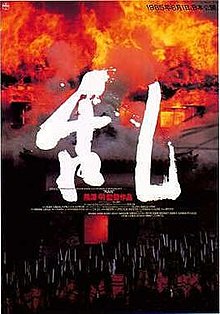 Story of movie Ran Film :
Story of movie Ran Film : 